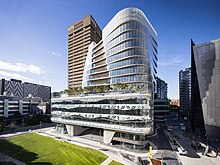UTS: Managing sport for development programs
UTS Associate Professor of Sport Management Dr Nico Schulenkorf outlines key insights into how to manage sport for development programs to achieve successful outcomes.
The focus of my talk is on managing sport for development, and what we have learned about designing programs to achieve the desired development outcomes. I’ll share with you some key insights from projects I’ve been involved with, and from the research that has been conducted over the last 15-20 years.
Sport for development is very different to the traditional “sport development” work, which is about making athletes faster and stronger, and creating pathways to go from grassroots to elite. What we are focusing on is the use of sport as a vehicle or a tool to achieve non-sporting outcomes. It’s about looking at sport for the benefit of the community, rather than focusing on the athlete.
When we look at the UN Sustainable Development Goals; no poverty, zero hunger, good health and wellbeing, quality education, gender equality… these are all goals and objectives that we have in sport for development.
Transcript
Sport is an attractive vehicle for development, but programs have to be designed and managed well, to achieve positive outcomes. There are seven themes listed by the Journal of sport for development where sport can make a contribution to development work. These are:
Livelihoods – that’s specifically related to economic development – for example creating job opportunities and facilitating volunteer opportunities for young people.
Social cohesion – using sport to provide togetherness and connection not only with friends and neighbours but also with unknown people.
Education – using sport to attract people to school. For example in Papua New Guinea we facilitated a rugby league program to get children to come to school, and to stay in school.
Gender equity – providing opportunities for girls and women to be active, and provide programs that are attractive to them.
Health and physical activity – for example in the Pacific Islands we’ve got, in some cases, overweight and obesity rates of 80-85% of the population so sporting programs can make a significant difference to health outcomes.
Disability and inclusion – involving people with a disability in sport programs so that they don’t have to sit on the sidelines.
Peace and reconciliation – This is where, for example in Sri Lanka during the civil war, we used sporting projects to bring together communities from different ethnic groups to build trust and friendships.
Girls show off their soccer SKILLZ
Girls kick violence with grassroots soccer. UN supported SKILLZ intervention at the Yomelela Primary School in Khayalitsha, Cape Town South Africa. Image: Flickr / UN Women
There’s certain challenges that we face in sport for development and it’s important to understand what works and what doesn’t. Programs need to be tailored to what is happening on the ground and be informed by local voices. Funding is always an issue, and we know it’s not easy to get development funds, particularly with many programs competing for limited NGO and government funding. And a final challenge is longer term evaluations from a research perspective.
Sport management, in a nutshell, is about strategic planning for desired outcomes. How do we design programs so that they will achieve the wider development outcomes? How do we empower communities and sustain programs so that they are not just there for a year or two, but are actually sustained for the longer term? I’ll share with you what we believe are the key features needed for a sport for development program to be successful.
The first is to have a key figure; a role model or a change agent – either a person or an organisation – who can drive things, really kick-start things. Second is a clear design for the desired development outcomes. Third is a participatory approach in the design, delivery and evaluation phases – so that the people that are supposed to benefit from the program are on board with the planning and management. And then finally the creation of a “safe space” – physically, but also culturally and socially.
Highlight events are also useful to shift up the excitement level, and they should be part of the sport for development planning. Large scale events like the World Cup, but also smaller events, tournaments and community celebrations all have an important role to play. However if you only have the event, without integrating it into a wider sport for development framework, this is a missed opportunity.
Managing and leveraging events
The idea of how to best leverage sporting events for community benefit – especially for disadvantaged communities – is something that will be critically looked at in the context of upcoming events in Australia such as the Women’s Football World Cup, Cycling World Championships, and the Olympics.

